During my visit to Spluga area in the Italian Alps, I spent a night in Bivacco Val Loga, and there I met two people who were in the mountains in search of crystals.
This was an opportunity for me to learn and understand a bit more about this activity. One of them was very kind and gave me two pieces of rocks with some hardly visible dark crystals embedded in them. In my related text you can read a bit more.

But I have also had opportunities to see some other people in various other places in the Alps that were clearly searching for such stones.
Even on glaciers, at least once I have seen a person walking around and inspecting rocks that were around. My guess is that he was actually in search of meteorites and tektites, natural glasses formed from terrestrial debris during meteorite impacts. They are more visible and easier to find on such a white areas than anywhere else.
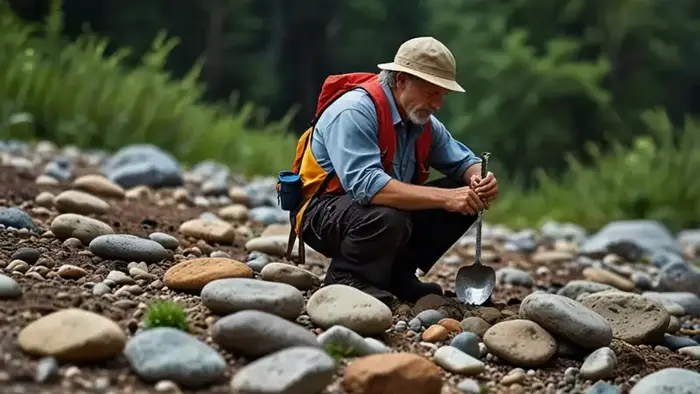
Are there really valuable crystals to be found in the Alps?
Did you know that in the Swiss Alps there is a unique crystal mine used as far back as 8000 BC? What is even more astonishing is the fact that the mine is at 2831 meters of elevation, and you need crampons to get there over a glacier.
In other words, the mine is far older than Ötzi which is also in the Alps and you can read more about the place in my another text.
The Alps’ complex geology, with its history of orogenic events, has led to the formation of these crystals in specific conditions like alpine clefts and crystal ovens, which are crevices filled with quartz veins.
But the process of crystal hunting in such environments is challenging due to the high altitude and often unstable terrain, requiring expertise in both geology and mountaineering.
Moreover, there have been instances where climbers and crystal hunters have discovered significant hauls of precious stones, adding to the lore and allure of crystal hunting in the Alps.
I would suggest that you have a look at the following two pdf documents with plenty of information about crystals in the Alps, the Giant Crystals The Planggenstock Treasure, and Alpine Minerals: A review of the Most Famous
Localities of the Central Swiss Alps.
So yes, there are valuable crystals to be found in the Alps. The region is known for a variety of crystals due to its rich geological history.
Below is a partial overview of what can be found, given in no particular order, but if you follow the previous link you will realize that there are many more.
Smoky Quartz
This variety of quartz is particularly noted in the Swiss Alps, with notable finds in places like Zinggenstock in the Berner Oberland and Tiefengletscher in Kanton Uri. Smoky quartz from these areas is highly valued for its color and clarity.
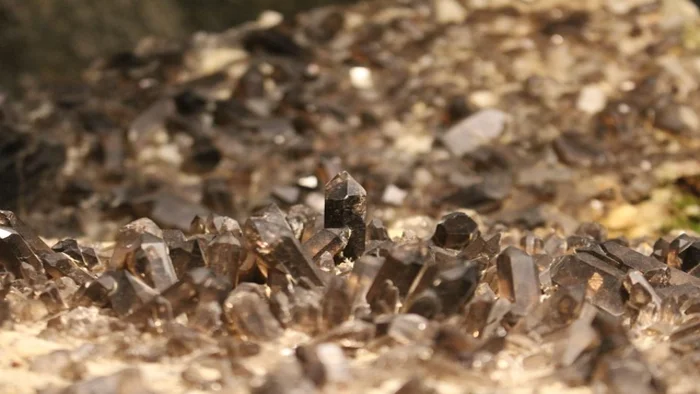
Fluorite
The Alps, especially around Mont Blanc and in Austria, are known for their fluorite deposits. Pink fluorite from the Mont Blanc Massif and beautiful fluorite from Weisseck Mountain in Austria are prized for their aesthetic qualities.
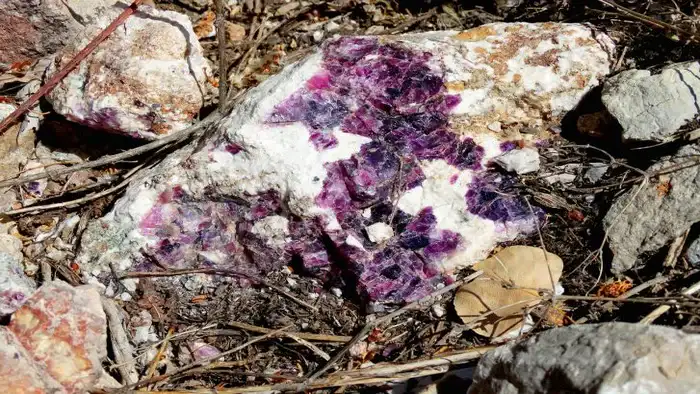
Epidote
Found alongside adularia in places like Gneiss Quarries in Arvigo, Switzerland, these crystals are appreciated for their distinctive green color and crystal formation.
Rock Crystal
Also known as clear quartz, rock crystals are found in significant quantities in various alpine clefts, particularly in regions like the Austrian Alps. They are highly sought after for their clarity and size.
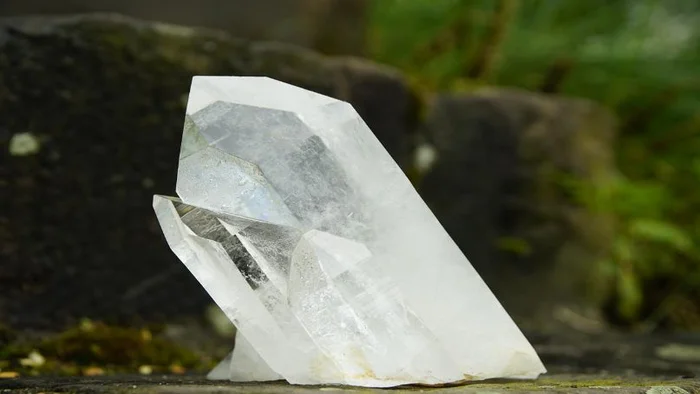
Gwindel Smoky Quartz
This unique formation of smoky quartz, known for its stacked and twisted crystal growth, is another valuable find in the Swiss Alps.
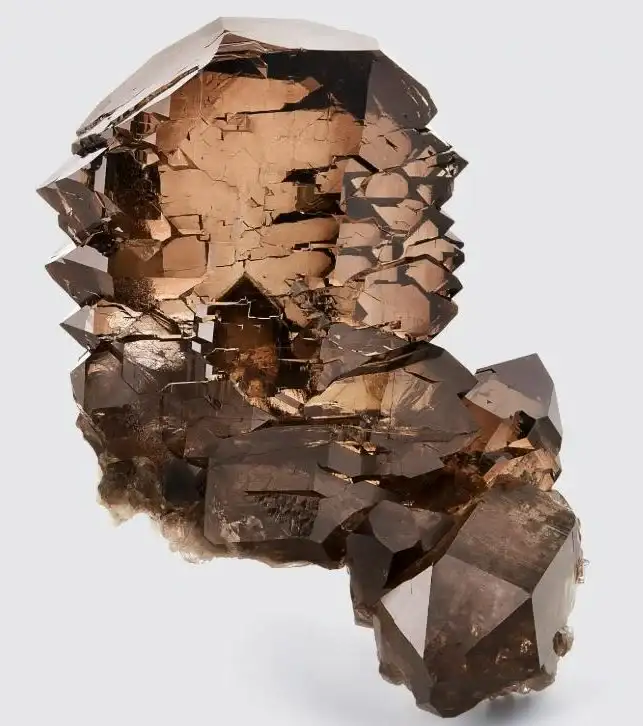
Topaz
Topaz is indeed found in the Alps, with Switzerland being particularly noted for its deposits. The topaz crystals found in this region are typically colorless or light blue, admired for their purity and clarity.
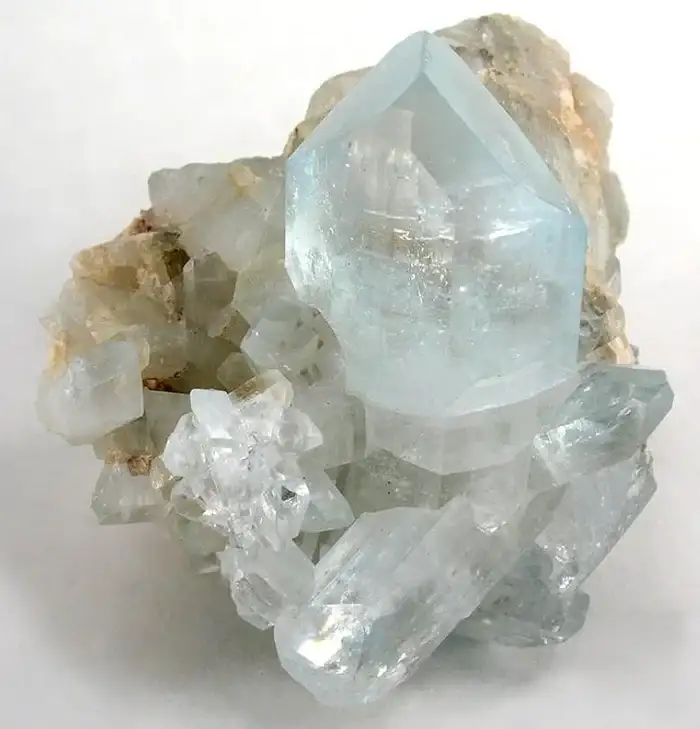
These gems are often associated with the pristine, scenic environment of the Alps, adding to their charm and value in the jewelry market.
Tourmaline
Tourmaline in the Alps, particularly in Switzerland, is known for its variety of colors. The Binn Valley (Binntal) in Valais, Switzerland, is especially famous for its tourmaline deposits.
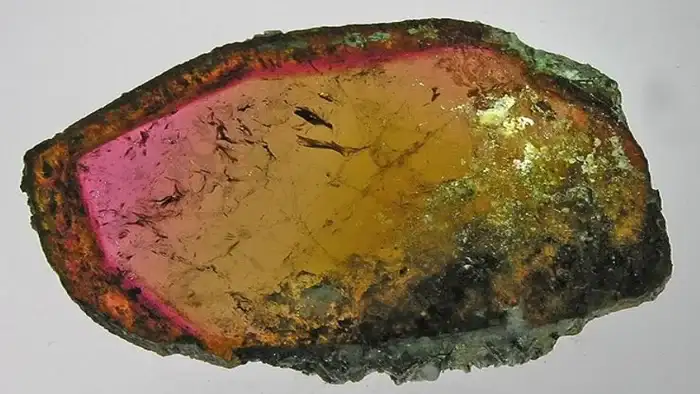
These crystals can range from black (schorl) to various shades of pink, green, and blue, with some specimens showing bi-coloration. The mineral diversity in the Alps, especially in pegmatites, has made it a significant source of tourmaline.
Garnet
Garnets are widely distributed throughout the Alps. They are found in various forms and colors, with red almandine and spessartine being common.
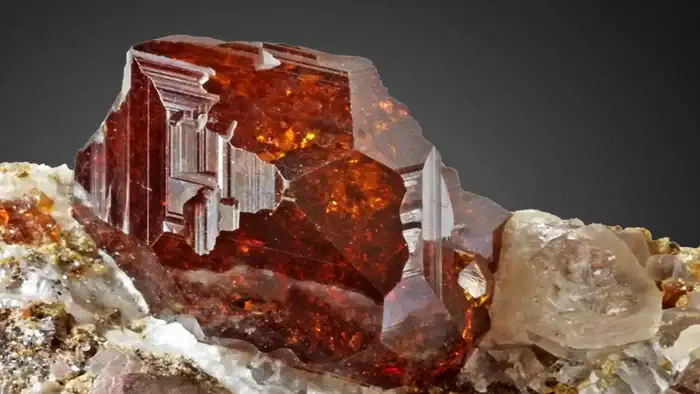
The Valais region, including the Simplon Pass area, has been noted for garnet deposits. Garnets here can occur in metamorphic rocks such as gneiss and schist, often alongside other minerals like quartz.
The presence of garnet in the Alps is a testament to the region’s complex geological history, involving high-pressure and temperature conditions that favor garnet formation.
Beryl
Beryl, including varieties like aquamarine and emerald, can be found in the Alps. The Binn Valley in Switzerland is again notable, where beryl occurs in association with other pegmatite minerals.

While not as commonly associated with the Alps as tourmaline or garnet, beryl does appear in this geological setting, particularly in alpine clefts. These environments are known for hosting crystals that have grown under the unique conditions of alpine metamorphism.
A specific example includes the bi-color beryl from Binn Valley, showcasing the geological diversity of this region
Amethyst
Amethyst is relevant to the Alps, although specific references to amethyst mining or notable deposits in this region are less common than other crystals like quartz or fluorite.
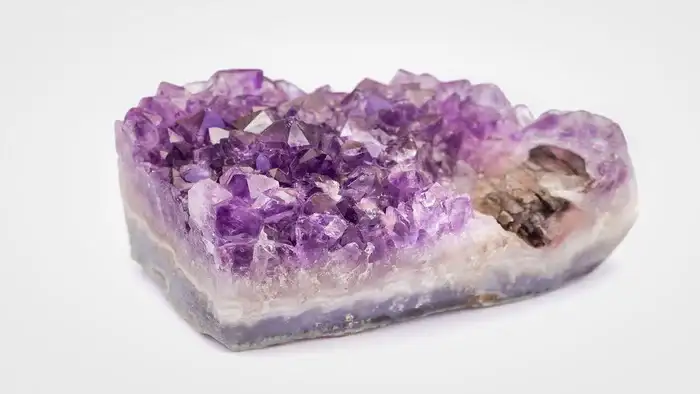
Amethyst isn’t as frequently highlighted in geological surveys or mineral collecting literature for this area. Amethyst, which is a violet variety of quartz, generally forms in igneous rocks like granites or in hydrothermal veins.
The Alps, with their diverse geological settings, could theoretically host amethyst, but it’s not a mineral that has been notably documented in significant quantities or quality from this region.
Amethyst’s presence in the Alps might be more incidental, found alongside other quartz varieties rather than being a primary mineral of interest.
Best areas to look for crystals in the Alps
The Alps are renowned for their diverse mineralogy, with several areas known for crystal deposits. Here are some of the best areas to look for crystals in the Alps:
Binntal (Binn Valley), Switzerland
This area is particularly famous for its mineral diversity, including top-quality smoky quartz, fluorite, adularia, and tourmaline. The Binntal is often considered one of the premier locations in the Alps for crystal hunting due to its rich pegmatites and alpine clefts.
Mont Blanc Massif, France
Known for its pink fluorite and smoky quartz, this region has a history of crystal hunting that dates back centuries. The challenging terrain here is home to some of the most spectacular alpine crystals, found in “crystal ovens” or crevices filled with quartz veins.
Zinggenstock, Berner Oberland, Switzerland
This area, especially around the Oberaar lake and Grimsel region, is famous for its smoky quartz. The Rufibach cleft find is particularly noted for producing high-quality smoky quartz crystals.
Tiefengletscher, Kanton Uri, Switzerland
Another spot for smoky quartz, known for its crystal formations in alpine clefts. This area has yielded some of the largest and most beautiful smoky quartz crystals in the Alps.
Gneiss Quarries in Arvigo, Switzerland
Here, you can find epidote and adularia, among other minerals. The geological setting of these quarries provides an excellent environment for crystal growth.
Weisseck Mountain, Austria
This location is known for its fluorite, often found in beautiful, clear to purple crystals. Austria, in general, has numerous spots for crystal hunting, but Weisseck stands out for its mineralogical treasures.
Austrian Alps, General
The Tyrolean and Carinthian Alps contain numerous sites for crystal collectors, with various quartz varieties, including rock crystal and amethyst. The alpine clefts in these regions are particularly rich in minerals.
These locations provide a starting point for anyone looking to explore the crystal-rich landscapes of the Alps, but remember, the best finds often require knowledge, patience, and sometimes, a bit of luck.
When hunting for crystals in these areas, bear in mind the following:
- Be prepared: The terrain is often challenging, requiring climbing skills, especially in higher altitudes.
- Respect the environment: Many of these areas are protected or require permissions for collecting. Always check local regulations and respect private property.
- Safety: High-altitude areas can be dangerous due to weather changes, rockfall, or ice; safety should always be your top priority.
Precious or semi-precious stones found at the edge of retreating glaciers
Here are some examples of precious or semi-precious stones found at the edge of retreating glaciers.
Smoky quartz: In the Swiss Alps, particularly around the Tiefengletscher, smoky quartz has been discovered as glaciers recede. These crystals, often of remarkable quality, are exposed when the ice that once covered them melts away. Posts on platforms like X have highlighted finds of significant smoky quartz specimens in these areas.
Fluorite: With the retreat of glaciers in regions like the Mont Blanc Massif and other parts of the Alps, fluorite, known for its vibrant colors ranging from deep purple to green, has been uncovered. The unique conditions of alpine clefts and the movement of glaciers can lead to the exposure of these crystals.
Pink fluorite: Specifically from the Mont Blanc Massif, the retreat of glaciers has occasionally revealed beautiful pink fluorite crystals. These are particularly noted for their aesthetic appeal and rarity.
These findings are often accidental, discovered by hikers, climbers, or researchers observing the natural changes in the alpine landscape due to glacier retreat. The process by which these stones come to light involves:
- Glacial transport: Glaciers can carry and deposit minerals from one place to another. As they retreat, they might expose stones that were once part of deeper geological formations.
- Exposed clefts: Alpine clefts are particular geological features where crystals form. Retreating glaciers can reveal these clefts, making previously hidden crystals accessible.
- Natural erosion: The continuous process of erosion by ice, water, and wind helps in uncovering these natural treasures over time.
While the Alps are more commonly known for minerals like quartz and fluorite rather than traditional “precious” gemstones like diamonds or emeralds, the term “precious” here refers to the rarity and beauty of these finds within the context of mineral collecting and geological study.
In the video below you can see two brothers who specialized in searching for such stones at high elevations and at retreating glaciers, have a look:
Final thoughts
In summary, the Alps contain a variety of valuable crystals, each with unique characteristics and appeal, making the region a significant area for mineral collectors and enthusiasts.
Collectors, geologists, and mineral enthusiasts often explore the Alps, especially areas like the Swiss Alps and the Mont Blanc region, in search of these crystals.
These minerals are part of what makes the Alps a hotspot for mineral collectors, geologists, and enthusiasts due to the unique conditions that have led to their formation. The combination of high pressure, temperature, and the presence of pegmatites and metamorphic rocks in the Alps has created an ideal environment for these crystals to form.
However, collecting these minerals may require permits or permission, depending on the region and local regulations. Additionally, the crystals found are often in remote or difficult-to-reach locations, making the process challenging and requiring special equipment.
Thank you for reading. Subscribe to my weekly newsletter, this will keep you informed because I add texts here regularly. Let me know if you have questions or comments, there is a comment box below. Have a nice day.
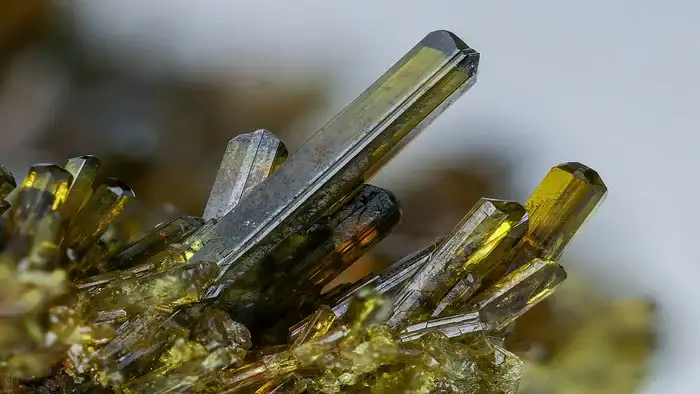
Leave a Reply